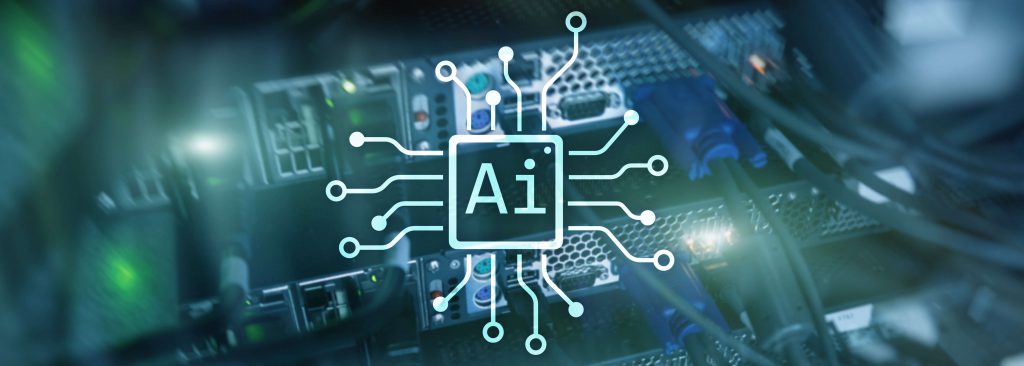
Why Artificial Intelligence in AP Automation is Now “Baseline”

It’s no secret to anyone in 2022 that we are living in the age of technology. Looking back, manual and tedious paper processes used to be the norm. Before our eyes, it’s now possible to automate a vast assortment of these processes. This kind of automation is especially vital in accounts payable departments that regularly process thousands of invoices each month. In such departments, processes like electronically submitted invoices and upfront PO matching are now necessities. It’s highly likely that these departments will end up seeking AP Automation solutions that offer these kinds of services. Among your search, you’ll probably find that many solutions offer futuristic and high-tech sounding components, such as “artificial intelligence,” among its distinguished features. Adding artificial intelligence in AP Automation sounds promising, right?
The truth is, any accounts payable automation service should have artificial intelligence at its most basic level. Often, you’ll find that automation solutions parade themselves as high-tech and impressive, simply because they utilize artificial intelligence. While artificial intelligence and its capabilities are absolutely nothing to scoff at, it’s important to know that there are different levels of artificial intelligence in AP automation. So, when examining an AP automation solution that brags about its use of artificial intelligence, it’s important to ask, what exactly does “artificial intelligence” entail?
Artificial intelligence in AP automation, at its most basic level, functions like this: A user inputs a set of rules and the artificial intelligence simply executes the rules as they are entered. This kind of artificial intelligence also recognizes characters and is required in almost all essential parts of AP Automation. This basic AI can be used to capture letters and numbers on invoices and reproduce them. However, this kind of AI doesn’t involve anything outside of the parameters it’s given. If, for example, it doesn’t recognize something on an invoice, or an invoice is formatted differently than what the AI has been taught, it doesn’t have the capability to figure out how to correct it on its own. This means that manual efforts are necessary to review the invoice, and figure out the error themselves. This kind of manual intervention will be required each time this happens, as this kind of basic artificial intelligence will not learn to recognize anything new from the manual correction. It is simply not within the capabilities of this level of artificial intelligence. This means that copious amounts of company time are still lost on having to manually correct invoices on a regular basis.
Beyond the basics, high-tier accounts payable automation solutions utilize artificial intelligence with more advanced processes. These types of processes typically involve what’s called Machine Learning. This level of artificial intelligence not only recognizes characters, but also recognizes patterns. Based on recognized patterns and historic data, the artificial intelligence is able to determine rules that are then applied towards future automation. So, take the previous example: Initially the artificial intelligence may not recognize something and will require manual efforts to solve the error. However, this higher level of artificial intelligence—machine learning—updates based on the manual correction. It is then able to better recognize a similar situation in the future and solve it on its own, thus cutting out the need for repeated manual intervention.
An additional layer of artificial intelligence is the use of auto-coding. With auto-coding, non-PO invoices are automatically coded based on confidence level. Initially, the system may make suggestions for different coding environments, but after having a selection confirmed multiple times, it will begin to auto-populate. In the beginning, the system may still flag the field, but as the accuracy persists, the confidence level increases until it has learned to auto-code invoices appropriately. As the use of AI is still growing and advancing in AP automation, not all AP automation solutions offer this level of artificial intelligence. However, enterprise-level companies looking for AI within a solution should look for features such as machine learning and auto-coding, as it is pivotal in taking automation to a higher level.
These stark differences in higher and lower-level processes are why it’s important to know what a solution means when it says it offers “artificial intelligence.” Does it simply recognize characters on an invoice? Does it still require lots of manual rule entry/upkeep? Or will it offer more complex and extensive kinds of AI with machine learning and auto-coding that actually further automate the processes? The solutions with the more complex and extensive artificial intelligence that are constantly updating and improving are optimal choices when it comes to streamlining your AP processes.
This is what to look for when exploring artificial intelligence in AP automation solutions. All automated AP solutions today should be offering the use of artificial intelligence—so it would be wise to include automation solutions with AI among your top choices. Once you have determined that the top automation solutions that you’re interested in offer artificial intelligence, don’t stop there. Look further to see if they give you the benefit of advanced processes that will heavily reduce tedious manual workloads. If the artificial intelligence that a solution offers consists of machine learning and auto-coding, it’s highly likely that solution will bring your accounts payable department greater success.